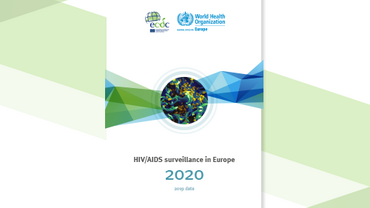HIV Pre-Exposure Prophylaxis in the EU/EEA and the UK: implementation, standards and monitoring
This operational guidance document provides practical recommendations and key considerations to inform the development and implementation of PrEP programmes at national and sub-national levels throughout the EU/EEA.
Executive Summary
Pre-exposure prophylaxis (PrEP) for HIV is the use of antiretroviral medication, taken to prevent the acquisition of HIV infection. In 2015, the European Centre for Disease Prevention and Control (ECDC) recommended that European Union (EU) and European Economic Area (EEA) countries should consider integrating PrEP into their existing HIV prevention package for those most at risk of HIV infection, starting with men who have sex with men (MSM). This was followed by the World Health Organization (WHO) recommendations that PrEP should be offered as an additional prevention option to all people at substantial risk of HIV infection as part of combination prevention approaches.
There has been a steady decline in HIV diagnoses in the EU/EEA since, but the 90-90-90 target (90% of people living with HIV [PLHIV] diagnosed, 90% of those diagnosed on anti-retroviral therapy [ART], 90% of those on treatment virally suppressed) set by the Joint United Nations Programme on HIV/AIDS (UNAIDS) has not been met consistently across EU/EEA countries. A further and substantial reduction in HIV incidence is required if Europe is to meet the Sustainable Development Goals by 2030. Reaching these goals requires a sustained focus on HIV prevention, including new interventions and approaches. New approaches include the implementation of PrEP and clear minimum standards for standardised delivery and monitoring of PrEP across the EU/EEA.
This guidance was developed to support countries in their efforts and to harmonise the overall approach taken to PrEP implementation in the region. This operational guidance document has been developed through evidence synthesis, online stakeholder consultation with experts with community, clinical and/or public health or policymaking expertise and through ongoing engagement and involvement with an expert scientific panel, appointed by ECDC (see panel members, process of appointment and terms of reference in Annex 2). This operational guidance document provides practical recommendations and key considerations to inform the development and implementation of PrEP programmes at national and sub-national levels throughout the EU/EEA. The document begins with key considerations for PrEP implementation in the EU/EEA and provides an overview of key markers of readiness to deliver larger-scale PrEP programmes. It also provides guidance on how to establish support from senior and community stakeholders and prioritise PrEP within national health agendas.
The operational guidance is structured around 10 core principles of effective PrEP programmes (Table 1). Each principle is described with a supporting rationale for its inclusion. Alongside each principle, related quality statements and minimum standards for delivery are presented. These are categorised as being relevant for preparatory (before a programme exists), new (under 24 months) and established (24 months and above) phases of PrEP implementation.
Download
Publication data
Country profile
Country case studies: ECDC operational guidance on Pre-Exposure Prophylaxis (PrEP) in the EU/EEA and the UK
Supplementary document with country case studies in relation to the ECDC operational guidance on HIV Pre-Exposure Prophylaxis in the EU/EEA and the UK: Implementation, standards and monitoring.








